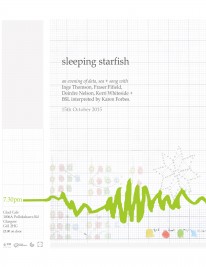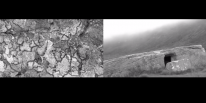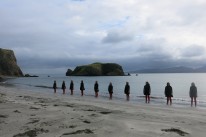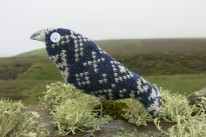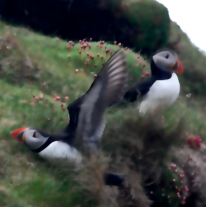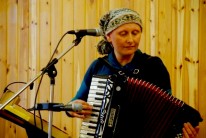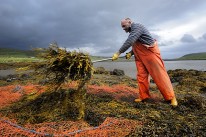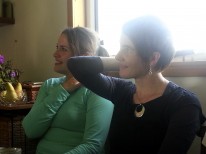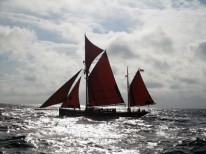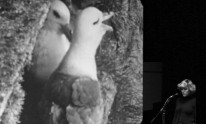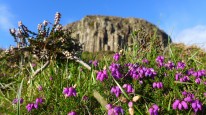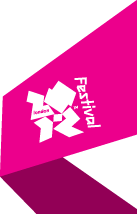Mathematics, making and birding
Deirdre Nelson

Fair Isle bird made by Tommy H Hyndman
At Da Fishin’ Hands premiere at the community hall I noticed a beautiful Fair Isle jumper in shades of mossy green and later discovered that the wearer was Inges grandfather Stewart, a retired Light House Keeper, fiddle player, spinner and spinning wheel maker. His wife Annie had made the sweater in the shades of lichen on his request and the jumper was over 50 years old.
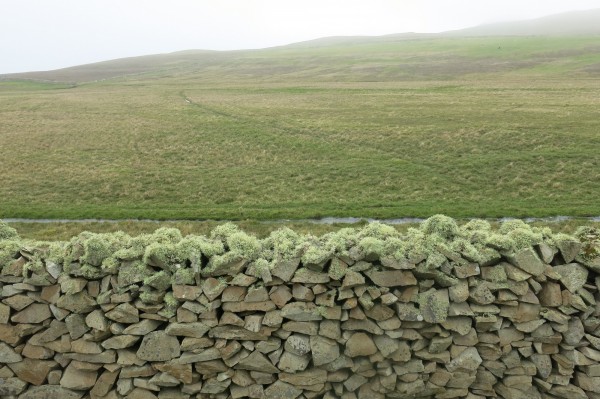
Inge had told me about her grandfather’s spinning so it was a real privilege to meet both Annie and Stewart Thomson. Both in their 90’s, the making of spinning wheels, spinning wool and hand knitting form part of daily life for them and as a textile maker I was in awe of their hand skills, resourcefulness and modesty. Annie describes the process of Fair Isle knitting as ‘mathematics first, next art and then knitting’. She has a vast array of patterns stored in her brain along with an ability to place those patterns mathematically within the structure of a knitted garment.
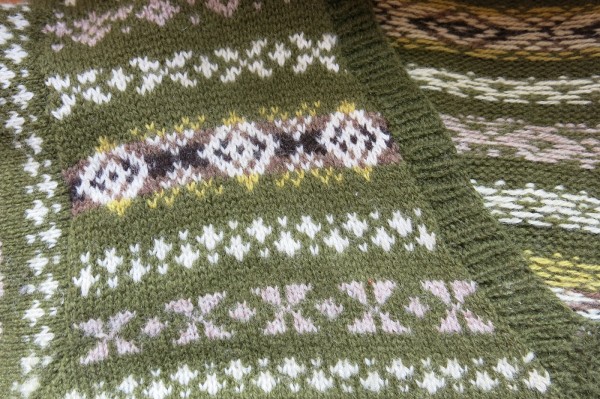
Knitwear by Annie Thomson
In times past, the traditional colours of madder (red), indigo (blue), moorit (brown), yellow and natural white, combined with the original patterns, were much sought after for their unique value, but in the 1920s Fair Isle sweaters knitted in the natural wool colours of moorit, shaela (grey), eesit (fawn) and natural white became highly fashionable. Nowadays, the traditional Fair Isle and natural (undyed) colours are still highly popular and are also complemented by more modern colourways. via Authentic Fair Isle
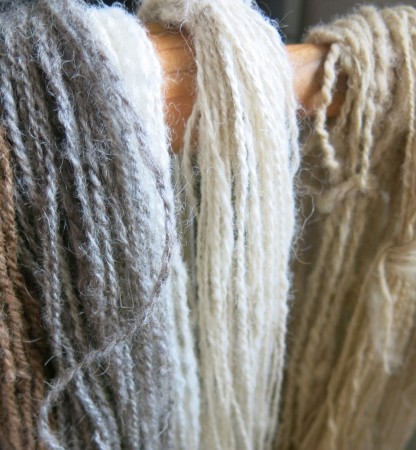
Wool spun by Stewart Thomson
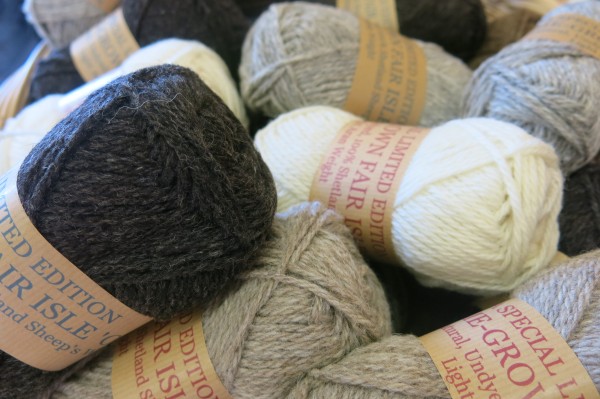
Wool by Kathy Coull
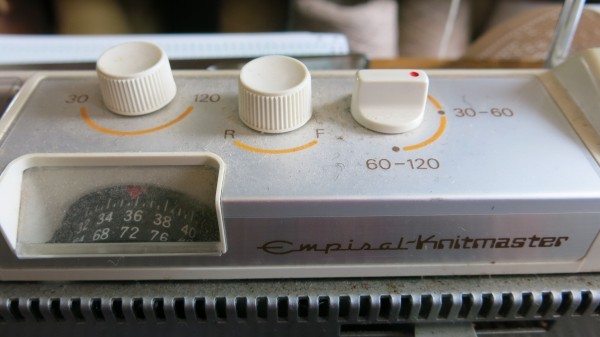
Hand frame knitting machine Fair Isle Made in Fair Isle
Alot of counting and measuring takes place on Fair Isle. The counting of birds, fish, marine fauna and flora form part of daily life here as does counting in both pattern and stitch for the knitting. Travelling via the Good Shepherd ferry, plane, yacht or via cruise ship, visitors become potential customers for the beautiful Fair Isle Knitting here. Knitting has been part of the economy through barter and sale both in Fair Isle and Shetland for a long time.
“For hundreds of years demand for hand-knitting kept Fair Isle women busy. Islanders traded with passing ships, bartering their home-made textiles and fresh produce for goods they couldn’t make themselves.”
‘Fair Isle hand-knitting is a very time and labour-intensive activity and throughout generations often involved all the female members of a family, including young children, to help earn an income for the home. Fair Isle Crafts Ltd., a small, workers’ co-operative was then established in 1980 when it was realised that the use of hand frames would allow the islanders to continue to produce their traditional knitwear in a manner which would be economically viable for both the knitters and their customers. After many years of successful trading world-wide, a dwindling number of knitters saw the cooperative finally cease operation in 2011. Today, the only source of the genuine article is still Fair Isle, where a small but vibrant number of Fair Isle knitters continue to produce high quality traditional and contemporary garments on hand-frame machines which are then all carefully finished by hand, washed and dressed’ via Authentic Fair Isle
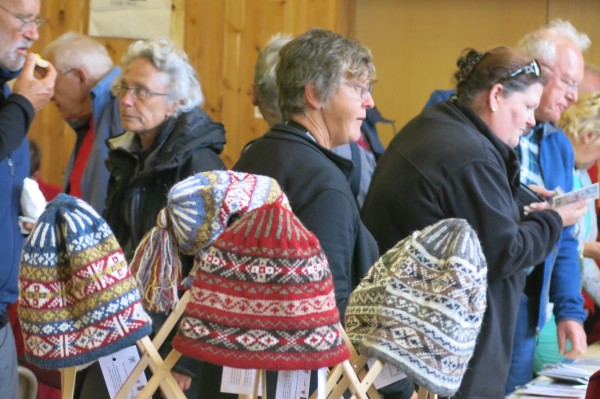
Hats by Exclusively Fair Isle at the community hall
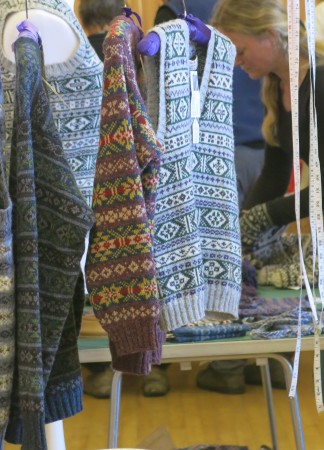
Knitwear by Fair Isle Made in Fair Isle
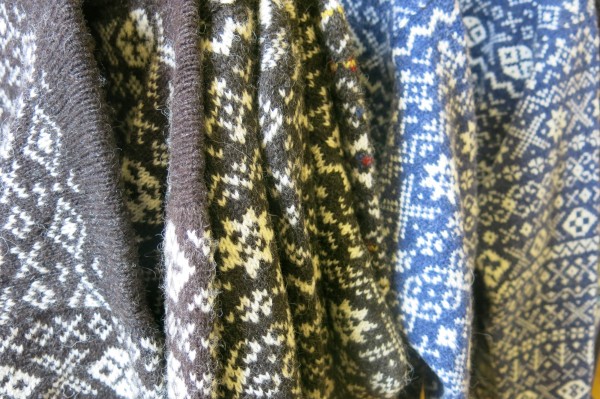
Knitwear by Mati Ventrillon
The birds attract many visitors and possible customers to the island but also provide a ‘window into the state of our seas’.
“In addition to their socio-economic importance to Fair Isle, seabirds are also a window on the state of our seas. Fair Isle Bird Observatory routinely monitors food samples collected by breeding birds for their young. The breeding success of a large population of Fair Isle seabirds has been poor in recent years. Breeding season failures have been associated with low food availability, particularly sandeels Ammodytes spp., which, for reasons of abundance and high calorific value, have been the mainstay of food provisioned to chicks for many species in the past“. Fair Isle Bird Observatory
Senior Research Assistant Rob Hughes and Aberdeen University PhD student Marianna Chimienti, as part of the RSPB’s Seabird Tracking and Research (STAR) project, are spending the summer studying five species of seabirds: Northern fulmar, European shag, Black-legged kittiwake, razorbill and Common guillemot. They hope to get an idea of their foraging behaviour and to identify important feeding areas.

Migration Warden, Ciaran Hatsell with a red backed shrike
‘From April – June and August – October, the wardening team aims to complete a full daily census of the migrants passing through Fair Isle. The island is divided into three (north, south west and south east), with wardens following a set route through each census area and recording all sightings. All areas are covered at the same time each day, normally over a three hour time period, to minimise the duplication of sightings and allow between-year comparisons of records, resulting in a data set stretching back over fifty years that provides valuable information for researchers.
In addition to the census data, visitors are encouraged to contribute to the record of migration through Fair Isle by submitting their own sightings at Log, held every evening in the Observatory lounge. Trap rounds carried out several times each day during the spring and autumn migration periods also serve to provide valuable information on bird movements, with large numbers of birds ringed each year on the island. These birds and those ringed elsewhere in Europe and trapped on Fair Isle enable researchers to better understand the process of migration and to identify any changes in migration patterns, which may indicate an increase/decline in species abundance or highlight responses to environmental pressures’ via Fair Isle Bird Observatory
You can follow the Bird Observatory wardens diary and latest sightings HERE
Fair Isle Marine Environment & Tourism Initiative (FIMETI) website and on Facebook

